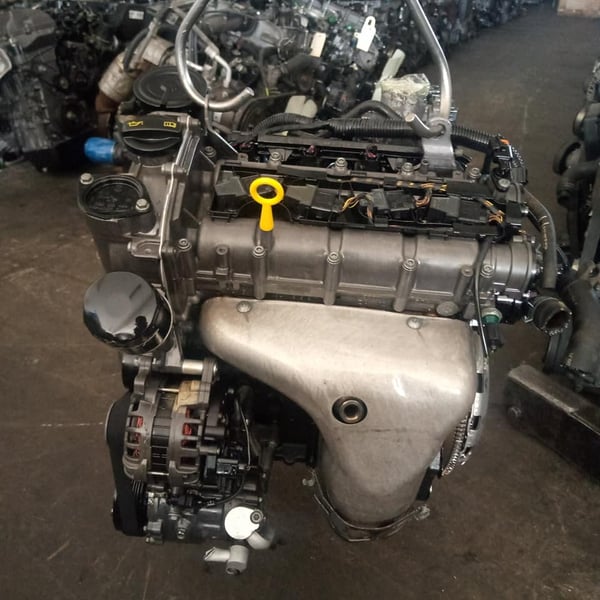The Role of a Clp Engine in Revolutionizing Engine Efficiency and Sustainability
The advent of CLP engine technology offers a pivotal moment in the automobile industry, where efficiency and sustainability converge in unmatched means. By enhancing burning procedures and allowing for dynamic modifications in compression ratios, these engines not only guarantee improved fuel performance and lowered emissions yet also obstacle conventional design paradigms.
Understanding CLP Engine Technology
As the automotive industry consistently seeks cutting-edge remedies to improve efficiency and performance, comprehending CLP engine modern technology becomes essential. The term CLP means Compression-Low Stress, an innovative engine layout that focuses on maximizing burning processes and decreasing emissions. This innovation runs by keeping a low-pressure atmosphere within the burning chamber, which facilitates an extra complete gas burn and reduces unburned hydrocarbons.
Among the crucial attributes of CLP engine innovation is its capability to adjust the compression proportion dynamically. This flexibility enables the engine to operate successfully throughout numerous driving problems, boosting gas economy while concurrently improving power output. Furthermore, CLP engines take advantage of progressed materials and style concepts to decrease weight and thermal losses, better adding to total performance.
Moreover, the assimilation of electronic control systems plays a vital duty in managing the engine's performance specifications. These systems allow real-time modifications to ignition timing and gas injection, enhancing combustion for both power and efficiency. By comprehending CLP engine technology, stakeholders in the automobile sector can much better value its capacity in driving the future of engine design, efficiency, and sustainability.
Performance Enhancements Offered
CLP engine innovation supplies substantial efficiency improvements that set it in addition to typical engine layouts. One of the key advantages of CLP engines is their ability to run effectively throughout a more comprehensive series of rates and loads. This versatility converts right into improved torque shipment and velocity, offering a more responsive driving experience.
Additionally, the advanced combustion procedure used in CLP engines optimizes fuel-air blending, leading to greater thermal effectiveness. This enhancement not only makes the most of power output however also minimizes energy loss, leading to an engine that carries out much better under numerous problems.
Furthermore, the modular style of CLP engines enables easier integration with hybrid systems, magnifying their performance capacity - clp engine. This versatility enables manufacturers to design automobiles that cater to customer requirements without compromising dexterity or power
The accuracy design involved in CLP innovation also adds to lower rubbing and wear, enhancing engine longevity and decreasing the frequency of upkeep. Generally, these efficiency enhancements setting CLP engines as a leading choice in the quest of high-performance, reputable, and versatile engine options.
Ecological Advantages of CLP Engines
One of the most engaging benefits of CLP engines depends on their ecological advantages, which are progressively important in today's automobile landscape. These engines are developed to maximize gas efficiency, significantly decreasing carbon emissions compared to conventional combustion engines. By utilizing innovative combustion strategies and innovative materials, CLP engines promote cleaner exhaust outcomes, adding to improved air top quality.
In addition, the decrease in fuel intake not just causes reduce greenhouse gas discharges however additionally conserves valuable natural deposits. As nonrenewable fuel source reserves diminish, the change towards CLP technology represents a critical action towards sustainability. The engines are frequently suitable with alternative fuels, even more improving their environmental charm and enabling for a varied energy profile.
Moreover, the light-weight design of CLP engines helps reduce vehicle weight, which subsequently reduces the power needed for propulsion. This causes reduced functional power usage and a reduced ecological impact. In summary, CLP engines stand at the leading edge of initiatives to reduce environment change and promote sustainable techniques in the auto market, embodying a future where performance and environmental responsibility are not mutually exclusive.
Contrast With Conventional Engines
While traditional engines have long dominated the auto industry, the intro of CLP technology provides a considerable change in efficiency and effectiveness. Typical interior burning engines primarily depend on fuel combustion, which not only limits thermal effectiveness yet also contributes to higher discharges. On the other hand, CLP engines use sophisticated thermal management and an one-of-a-kind combustion procedure, enhancing gas efficiency and significantly reducing greenhouse gas discharges.
Additionally, typical engines run on set power curves, which can prevent efficiency in varying driving problems. CLP engines, however, are developed to adapt their efficiency dynamically, providing optimal power shipment based index on real-time demands. This versatility brings about boosted velocity, responsiveness, and total driving experience.
Maintenance also differs substantially; conventional engines often call for constant oil adjustments and element substitutes due to use and tear. clp engine. CLP engines, with fewer moving components, assure minimized maintenance needs and longer functional lifespans

Future Leads and Innovations
As the automobile landscape develops, the future of engine innovation is increasingly concentrated on technologies that enhance efficiency and sustainability. The Clp engine, with its unique style and functional effectiveness, is poised to play a crucial duty in this improvement. Future advancements may include developments in products scientific research, making it possible for the construction of lighter and a lot more durable components, thus lowering overall car weight and enhancing fuel efficiency.
In addition, the combination of expert system and artificial intelligence into engine administration systems is expected to optimize efficiency dynamically, permitting real-time modifications based upon driving conditions. These innovations can even more decrease exhausts and enhance energy use.
Furthermore, research study right into alternate gas, including hydrogen and biofuels, provides amazing possibilities for Clp engines, lining up performance with green initiatives. clp engine. As regulative frameworks end up being stricter, the fostering of such innovations will be important in attaining sustainability goals without jeopardizing power
Conclusion

Comments on “Optimize your machinery with a high-quality clp engine.”